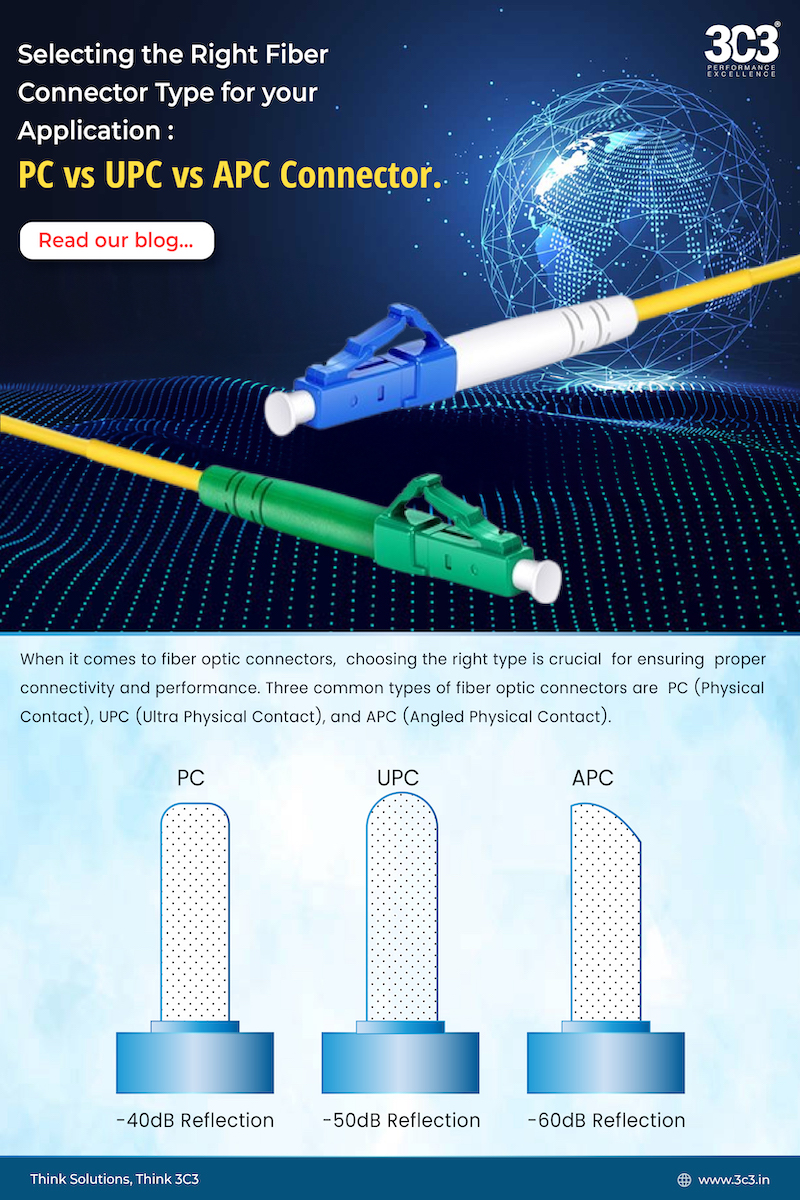Selecting the Right Fiber Connector Type for your application : PC vs UPC vs APC Connector:
When it comes to fiber optic connectors, choosing the right type is crucial for ensuring proper connectivity and performance. Three common types of fiber optic connectors are PC (Physical Contact), UPC (Ultra Physical Contact), and APC (Angled Physical Contact).
Introduction to Different Connector Types
To put it simply, PC, UPC, and APC refer to the polish styles of the ferrules inside the fiber optic connectors, just as the following figure shows. The ferrule is the housing for the exposed end of a fiber, designed to be connected to another fiber, or into a transmitter or receiver. When connectors are installed on the end of a fiber, light is reflected back up the fiber towards the source, disrupting the signal. To increase the efficiency of fiber, engineers began to upgrade the surface of the critical point of attachment, and that’s how ferrule polish technologies are introduced. Here's a brief overview of each type:

PC (Physical Contact) Connector:
- Design: PC connectors have a flat end face, and the fibers are polished with a slight curvature. This results in a small air gap when two connectors mate.
- Application: PC connectors are widely used in standard communication systems and are suitable for most applications. They provide low insertion loss and reliable performance.

UPC (Ultra Physical Contact) Connector :
- Design: UPC connectors also have a flat end face, but they undergo a more refined polishing process than PC connectors. This results in a better surface finish and lower back reflection.
- Application: UPC connectors are commonly used in applications where lower back reflection is critical, such as in cable television (CATV), passive optical networks (PON), and high-speed data transmission.

APC (Angled Physical Contact) Connector :
- Design:APC connectors have an angled end face (usually an 8-degree angle). This angled design minimizes back reflection by directing it away from the source.
- Application:APC connectors are often used in applications where very low back reflection is essential, such as in some fiber-to-the-home (FTTH) networks, dense wavelength division multiplexing (DWDM) systems, and other high-end optical systems.

Performance
It used to be hard to achieve low insertion loss using APC connectors owing to the air gap in the apex offsets,
yet nowadays the improvement of connector design and manufacturing push APC connectors to perform better.
The insertion difference between APC and UPC has been diminished.
As for the performance of return loss, you may have noticed APC connectors have the lowest back reflection of all the
fiber connectors mentioned owing to the angled endface. For this reason, the values of the return loss are different.
According to the industry standards, the return loss of PC, UPC, and APC connectors is respectively about -40dB, -50dB, and -60dB or higher.
The higher the return loss is, the lower the reflection and the better the connector performance will be.
It proves that APC connectors are higher-performing among the connectors listed.
Application
Since some applications are more sensitive to return loss, APC connectors are preferred in these fields, for instance,
in higher wavelength range like those used for RF video signals, especially FTTx applications and for applications such
as passive optical networks and other WDM systems using high wavelength via single mode fiber.
For those applications where return loss is not paid much attention to, UPC or PC comes into play. PC connectors are
generally seen in telecom operators' equipment, while UPC connectors are popular in digital TV, telephony and data
systems.
Summary
In summary, It is improper to say whether PC, UPC or APC is the best polish type of fiber connectors. When choosing fiber connectors for specific applications, factors such as cost and operability should be considered. However, there is one rule that should be followed: for those applications which high precision optical fiber signaling matters, choose APC; for less sensitive digital systems, PC or UPC is capable.
